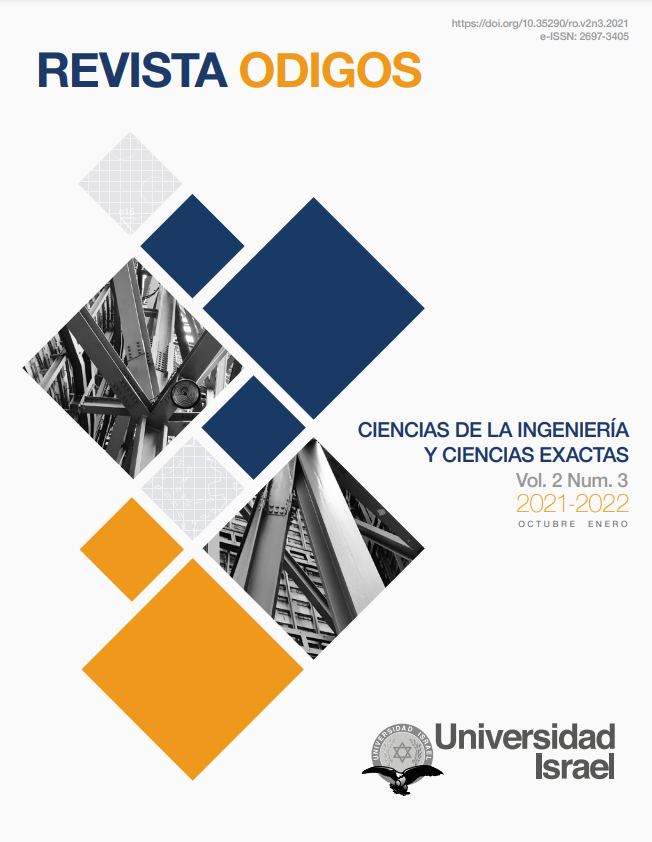Análisis de sentimientos para Twitter con Vader y TextBlob
DOI:
https://doi.org/10.35290/ro.v2n3.2021.494Palabras clave:
Twitter, sentimientos, algoritmos, precision, pythonResumen
El análisis de sentimientos constituye una herramienta fundamental para el éxito de las actividades orientadas al público. Las redes sociales se han consagrado como un escenario válido para realizar este análisis, especialmente Twitter, que ofrece un API libre para la obtención de datos. El proceso para análisis de sentimientos incluye etapas de descarga, utilizando la librería Tweepy, depuración implementando métodos para eliminar símbolos que no aporten en el sentimiento del tuit y análisis con dos librerías: Vader y TextBlob. Estas devuelven un porcentaje que define si el tuit es positivo o negativo; sin embargo, cada una funciona con un algoritmo y entrenamiento diferente que ocasiona discrepancia en los resultados, TextBlob presentó mayor precisión. La parte final del análisis constituyen en el cálculo de métricas: precisión, exactitud, sensibilidad, especificidad y matriz de confusión.
Descargas
Referencias
Barrios Arce, J. (26 de Julio de 2019). La matriz de confusión y sus métricas. Health Big Data https://www.juanbarrios.com/la-matriz-de-confusion-y-sus-metricas/
Cambria, E., & Hussain, A. (2012). Sentic computing. marketing, 59(2), 557-577. https://doi.org/10.1007/978-94-007-5070-8_4
Hutto, C., & Gilbert, E. (2014). Vader: A parsimonious rule-based model for sentiment analysis of social media text. In Proceedings of the International AAAI Conference on Web and Social Media, 8(1).
Mejía Llano, J. (17 de marzo de 2021). ESTADÍSTICAS DE REDES SOCIALES 2021: USUARIOS DE FACEBOOK, INSTAGRAM, YOUTUBE, LINKEDIN, TWITTER, TIKTOK Y OTROS. https://www.juancmejia.com/marketing-digital/estadisticas-de-redes-sociales-usuarios-de-facebook-instagram-linkedin-twitter-whatsapp-y-otros-infografia/#4_Usuarios_activos_de_Twitter
Mendoza, M. (1994). Técnicas de observación directa para estudiar interacciones sociales infantiles entre los Toba. RUNA, archivo para las ciencias del hombre, 21(1), 241-262. https://doi.org/10.34096/runa.v21i1.1400
NLTK Project. (20 de abril de 2021). NLTK 3.6.2 documentation. https://www.nltk.org/
Pauli, P. A. (2019). Análisis de sentimiento - Comparación de algoritmos predictivos y métodos utilizando un lexicon expañol. [Tesis de grado, Instituto Tecnológico Buenos Aires] Repositorio ITBA. http://ri.itba.edu.ar/handle/123456789/1782
Roman, V. (25 de abril de 2019). Algoritmos Naive Bayes: Fundamentos e Implementación. Medium. https://medium.com/datos-y-ciencia/algoritmos-naive-bayes-fudamentos-e-implementaci%C3%B3n-4bcb24b307f
Romero Vega, R. (2021). Análisis de sentimientos en twitter para descubrir contenido xenófobo hacia los inmigrantes venezolanos en Ecuador. [Tesis de grado, Universidad Nacional de Loja] Repositorio UNL. https://dspace.unl.edu.ec/jspui/handle/123456789/23796
Twitter. (2021). Developer Platform. https://developer.twitter.com/en/docs/projects/overview
Universidad de Alcalá. (s.f). Lenguajes de programación para data science. https://www.master-data-scientist.com/lenguajes-programacion-data-science/
Vélez Bravo, (2020). Aplicativo para detectar conductas violentas en Twitter, a través de análisis de sentimientos. [Tesis de grado, Universidad Central del Ecuador]. Repositorio digital UCE. http://www.dspace.uce.edu.ec/handle/25000/20926
Publicado
Número
Sección
Licencia
Derechos de autor 2021 Sofía Belén Alemán Viteri

Esta obra está bajo una licencia internacional Creative Commons Atribución 4.0.
Los autores que participen de los procesos de evaluación y publicación de sus ediciones conservan sus derechos de autor, cediendo a la revista el derecho a la primera publicación, tal como establecen las condiciones de reconocimiento en la licencia Creative Commons Reconocimiento 4.0 Internacional (CC BY), donde los autores autorizan el libre acceso a sus obras, permitiendo que los lectores copien, distribuyan y transmitan por diversos medios, garantizando una amplia difusión del conocimiento científico publicado.
- Toda derivación, a partir de esta obra, deberá citar la fuente y a la primera publicación en esta revista. Se permiten derechos comerciales no lucrativos sobre sus contenidos.
- Los autores pueden realizar otros acuerdos contractuales independientes y adicionales para la distribución no exclusiva de la versión del artículo publicado en esta revista, es decir, podrán incluirlo en un repositorio institucional o publicarlo en un libro, siempre que indiquen claramente que el trabajo se publicó por primera vez en esta revista.
- Se permite y recomienda a los autores compartir su trabajo en línea, con la finalidad de intercambios productivos para una mayor y más rápida citación del trabajo como lo establece los efectos del movimiento ‘Acceso Abierto’.
- No puede aplicar términos legales o medidas tecnológicas que restrinjan legalmente a otros de hacer cualquier cosa que permita la licencia: https://creativecommons.org/licenses/by/4.0/deed.es
- La Revista ODIGOS es financiada completamente de los aportes realizados por nuestra entidad editora: Universidad Tecnológica Israel; por tal motivo, no establece cargos o cobros de ninguna índole a sus autores y colaboradores, así como tampoco genera pagos o remuneraciones de ningún tipo a ellos.
- Se asignará un Digital Object Identifier (DOI) a cada publicación.




